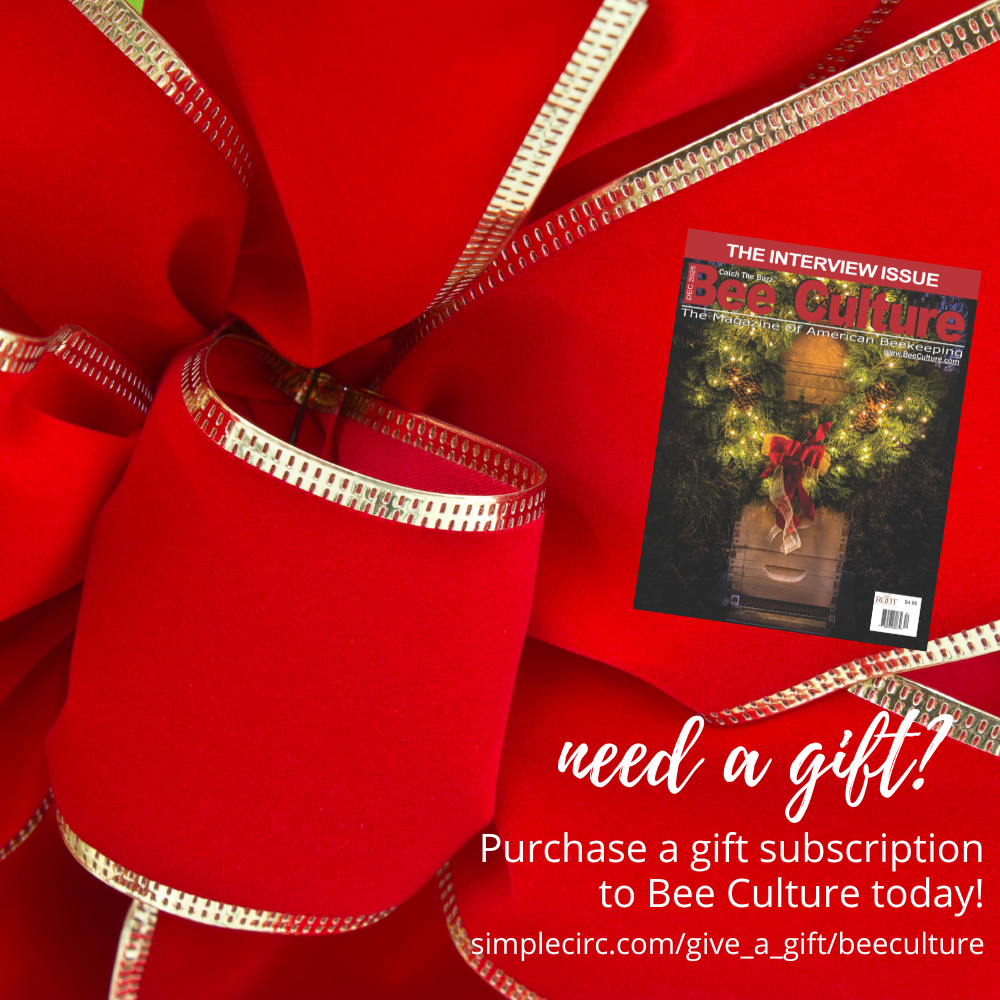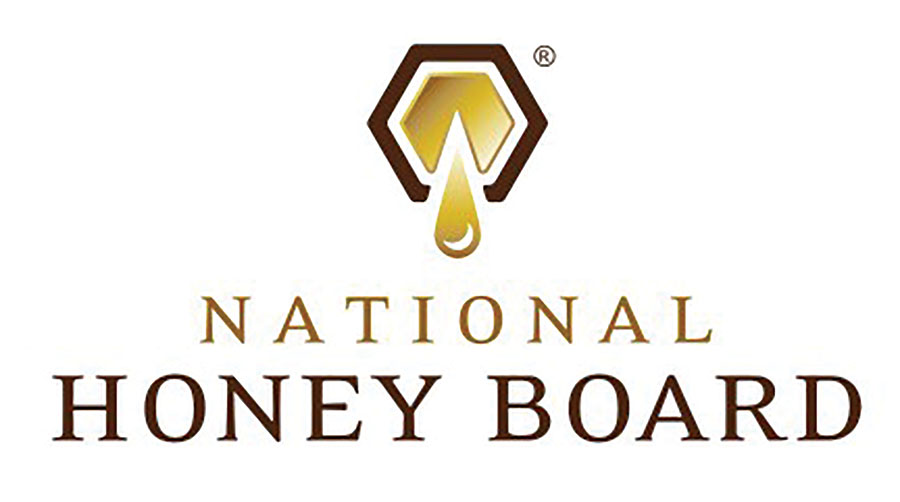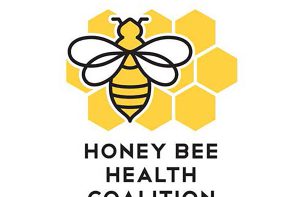by Ann Harman
Do you know about the National Honey Board? If you are a beekeeper, large or small, you should be taking advantage of the information and items that are offered not only to help you market your honey but also to give you very useful honey information. Since this is National Honey Month let me introduce you to a valuable resource.
First a bit of history. The United States Department of Agriculture (USDA), through the Agricultural Marketing Service (AMS), administers a number of marketing boards. The purposes of these boards, made of members of an agricultural commodity, are to conduct market research for their particular product and promote the product. These marketing boards are established under Federal law at the request of producers. The first board, for cotton, was established in 1966.
You may be familiar with the results of such promotion. Remember ‘Pork, The Other White Meat?’ That slogan was developed by the Pork Marketing Board and was used for 25 years until 2011 when the slogan was changed to ‘Pork: Be Inspired.’ Today 22 USDA marketing boards exist, from Beef to Watermelons. These commodity and research programs, also known as checkoff programs, receive their funding from assessments, called checkoff funds, paid by the producers. Therefore, the yearly budget for board operation depends on the production of the product.
Around 1985 a group of the nation’s honey producers decided that honey needed a marketing board to encourage sales and consumption of honey. None of the producers had any idea of who used honey, how much people used, and even what the users did with purchased honey. At that time a market for honey had to be created by each producer, large or small.
In order for a marketing board to be established certain guidelines must be followed. The proposal, submitted to USDA, has specific requirements: information about domestic production, imports and number of large and small businesses. Support throughout the industry is essential, as well as impact on and benefit to small businesses.
The honey producers submitted their proposal. The National Honey Board (NHB) was approved in May 1986 and became operational in early 1987. A commodity board has an office staff headed by a CEO. The board members are nominated by those involved in the industry and must be approved by the Secretary of Agriculture. A board member, as well as an alternate, is approved and appointed. The alternates can attend board meetings so that they will be an informed substitute should the occasion arise.
At inception of the National Honey Board the United States was divided into regions depending on honey production. The initial board was made of honey producers, large and small, chosen from each region, plus an importer and a packer. In 2008 a referendum was taken and the original makeup of the board was changed. Today it is composed of producers, packers, importers and one representative of a cooperative. To be a board member the producer is required to produce at least 150,000 pounds of honey a year, based on best three-year out of five-year average. The board members receive no compensation except for travel expenses to board meetings or conducting board business. In addition assessments of 1.25 cents per pound are imposed on first handlers (those who buy honey in quantity from producers and market it), and importers or importer-handlers. (The assessment is scheduled to increase to 1.5 cents/pound in 2016. Those in any category who produce or handle or import less than 250,000 pounds per year can apply for an exemption from the assessment.
Briefly, the board prepares budgets and plans development of research, promotion, advertising, and information programs for honey and honey products, all with the approval of the Secretary of Agriculture. The office staff is based in Firestone, CO. Here is where the day-to-day business is conducted.
The activities of the National Honey Board are amazing. Pay a visit to the website, honey.com, not just now but throughout the year. After all, the information, as well as many other things having to do with honey and marketing honey, is free.
Sign up for the Honey Feast newsletter. Periodically you will automatically get an email with new seasonal recipes. Use them yourself. In addition, put them in your club’s newsletter and encourage club members to distribute the recipes to their honey customers. After all if the customers are encouraged to use honey in a recipe, they will buy more honey. Recipes are available in sixteen different categories, such as main dishes and baked goods, including one for holidays and one for kids.
Recipes are also available in twelve different categories for the food service industry. If you know a chef or someone with a restaurant or a school that prepares food let them know about these recipes. The quantities are large. In addition to recipes the Food Service tab offers other valuable information about using honey. A newsletter is also available plus a complementary resources kit. Since these Food Service recipes make a larger quantity of a dish than normal recipes you might find a recipe suitable for taking to a potluck supper at your bee club.
Since you are a beekeeper you probably have been asked endless questions about honey or have been asked to give a talk about honey. A visit to the Honey at Home tab, then to Learn About Honey will give you a download for a brochure entitled ‘Honey. A Reference Guide to Nature’s Sweetener.’ Here you can find the answer to all the questions you have been asked including an excellent explanation about why infants should not be fed honey. Some honey customers do not know the reason for that. A good answer is reassuring and encourages honey purchase.
Are you selling your honey for a good price? If you visit the Honey Industry tab, Honey Industry Statistics, you can find a table of retail price per pound of honey over several years. You can then compare your current price to that across the nation. It is interesting to see that honey has increased in price, indicating that consumers value honey as a sweetener. (The data the National Honey Board uses on their price list is from Bee Culture’s Monthly Honey Report, just so you know.)
Honey needs a legal label if it is going to be sold, even at a farmers’ market. The basic legal label information can be found on the website. However it would be important to check with your own state’s labeling requirements in case you need to have additional information.
Puzzled about ‘raw’ honey and ‘filtered’ honey? Customers frequently have definite opinions about various honey processing terms. ‘Heating,’ ‘filtering’ (often confused with straining), all seem to ruin honey’s benefits. A visit to the NHB site for Honey Nutrition Information may surprise you. This section has the results from scientific studies on the effects of processing honey. Take a few minutes to read the two papers giving the findings on processing. You will then be able to discuss honey, its processing and benefits, with your customers. You will also find abstracts of other research on honey. Such research is expensive but that is part of the work of the National Honey Board.
Now let’s have some fun. If you visit Tools, Tips and Resources you will find Digital Art. You can download Brochures, Wallpaper, E-Cards and Clip Art. These are available to help you construct your own promotional material, use in newsletters, handouts to accompany your jars of honey, make hang tags, decorate information for customers, and whatever else you think of. The Clip Art file has four sheets you can download. The E-Cards have a recipe on them – a great way to give a gift of honey. And all these are free!
Now go to Honey and Bee Research under the tab for Honey Industry. Here you will find information about a small but very important part of the National Honey Board – funding research. The NHB has allocated funds for research since 2004. Scientists can find information about submitting a Pre-Proposal at this site.
The most famous honey scientist, Dr. Jonathan W. White, Jr., spent his life discovering honey. His scientific papers, all 250 of them, were digitized by Pennsylvania State University and shared with the National Honey Board. Although honey research is still conducted, his papers are still a valuable resource.
Would you like to know what people are doing with honey that they buy? Who buys honey? Why do they buy it? The National Honey Board conducts frequent surveys to find out the answers to these and other questions about honey and its consumption. The most recent survey was done in 2013. You will find the results of that and other surveys under Market Research. Making surveys is an important part of marketing boards. The answers give the boards guidance in preparing advertising and also making appropriate marketing tools available to producers.
If you are selling honey directly to consumers it would be a good idea to look at the results of this survey. Consumers are still using honey in tea and on biscuits and for a cough. You may need to give your customers more recipes. If your new customers are confused about what ‘pure’ honey is, perhaps you can make a handout explaining ‘pure honey.’ If you think you have too many of ‘just put it in my tea’ customers, perhaps some simple and quick recipes would encourage them to use more of your honey. Survey results can help you decide appropriate promotion of your honey.
Are you a fan of Minor League Baseball and attend games? For eight years the National Honey Board has been a sponsor. This year 14 teams are sponsored. Brochures and recipes are available at games. Honey is promoted at the games as an all-natural energy booster, perfect for all who play sports. The NHB honey bear mascot is present at the ball games to entertain the fans. To find out more about the teams and the NHB activities there you can put Minor League Baseball into the Search box.
There’s so much more! Click on BLOG to find more activities. Go to the Honey Locator to find out where to buy honeys different from yours. Your customers might like to buy some special honey – one from another part of the United States. It makes no difference if you are a new beekeeper with two hives or a seasoned beekeeper with hundreds of hives – use honey.com! It’s there for you to use and it’s free!
Ann Harman was there at the beginning of the National Honey Board. She served on the NHB Board representing hobby beekeepers.









